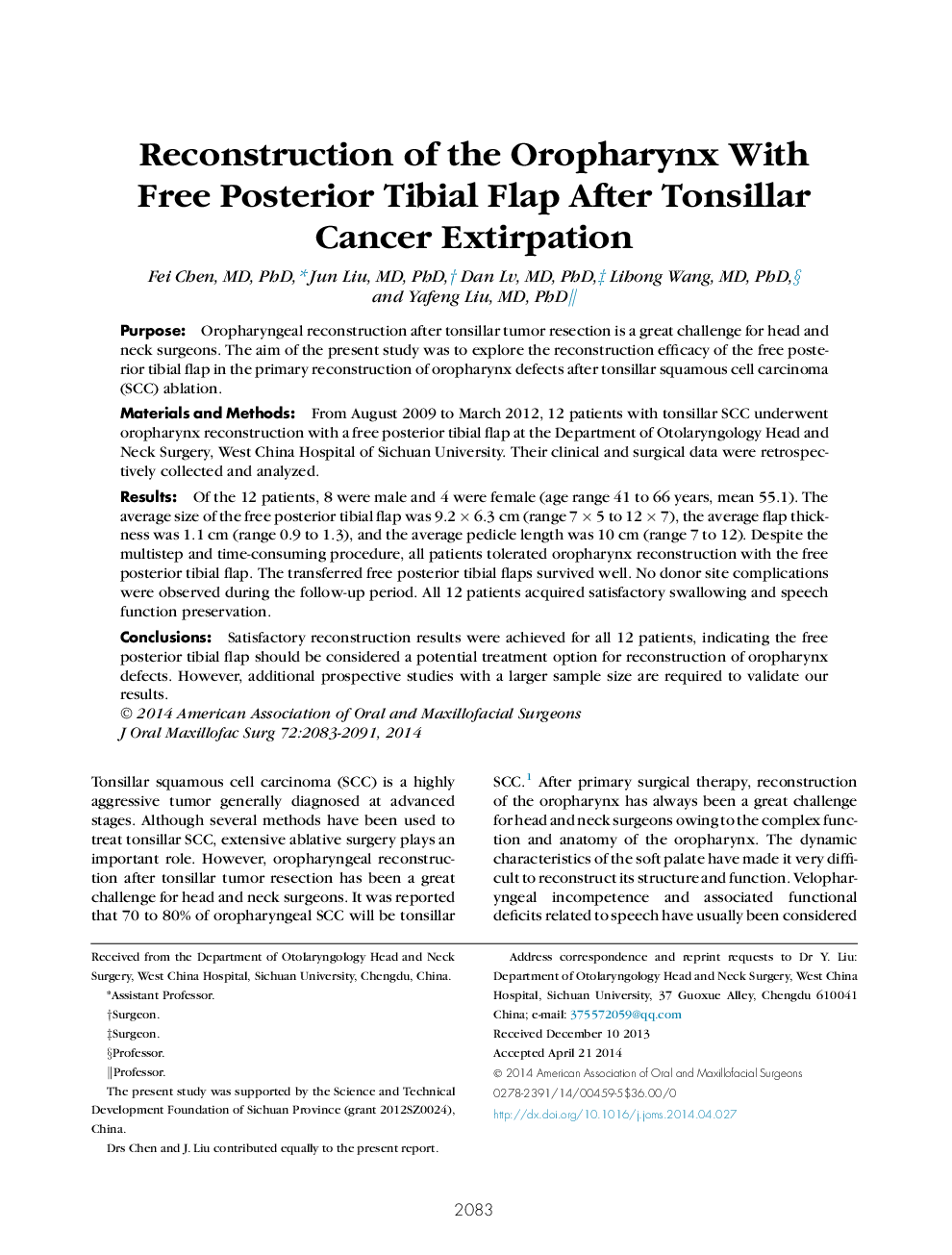| Article ID | Journal | Published Year | Pages | File Type |
|---|---|---|---|---|
| 3153480 | Journal of Oral and Maxillofacial Surgery | 2014 | 9 Pages |
PurposeOropharyngeal reconstruction after tonsillar tumor resection is a great challenge for head and neck surgeons. The aim of the present study was to explore the reconstruction efficacy of the free posterior tibial flap in the primary reconstruction of oropharynx defects after tonsillar squamous cell carcinoma (SCC) ablation.Materials and MethodsFrom August 2009 to March 2012, 12 patients with tonsillar SCC underwent oropharynx reconstruction with a free posterior tibial flap at the Department of Otolaryngology Head and Neck Surgery, West China Hospital of Sichuan University. Their clinical and surgical data were retrospectively collected and analyzed.ResultsOf the 12 patients, 8 were male and 4 were female (age range 41 to 66 years, mean 55.1). The average size of the free posterior tibial flap was 9.2 × 6.3 cm (range 7 × 5 to 12 × 7), the average flap thickness was 1.1 cm (range 0.9 to 1.3), and the average pedicle length was 10 cm (range 7 to 12). Despite the multistep and time-consuming procedure, all patients tolerated oropharynx reconstruction with the free posterior tibial flap. The transferred free posterior tibial flaps survived well. No donor site complications were observed during the follow-up period. All 12 patients acquired satisfactory swallowing and speech function preservation.ConclusionsSatisfactory reconstruction results were achieved for all 12 patients, indicating the free posterior tibial flap should be considered a potential treatment option for reconstruction of oropharynx defects. However, additional prospective studies with a larger sample size are required to validate our results.
